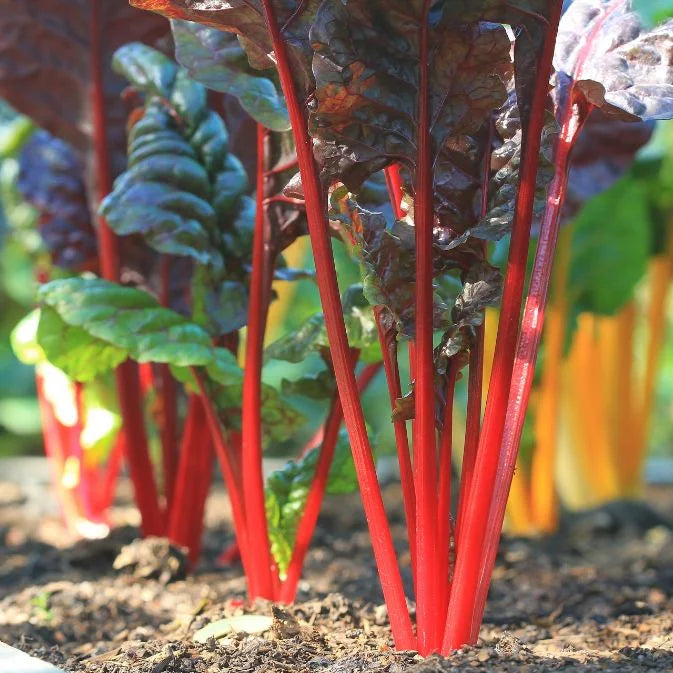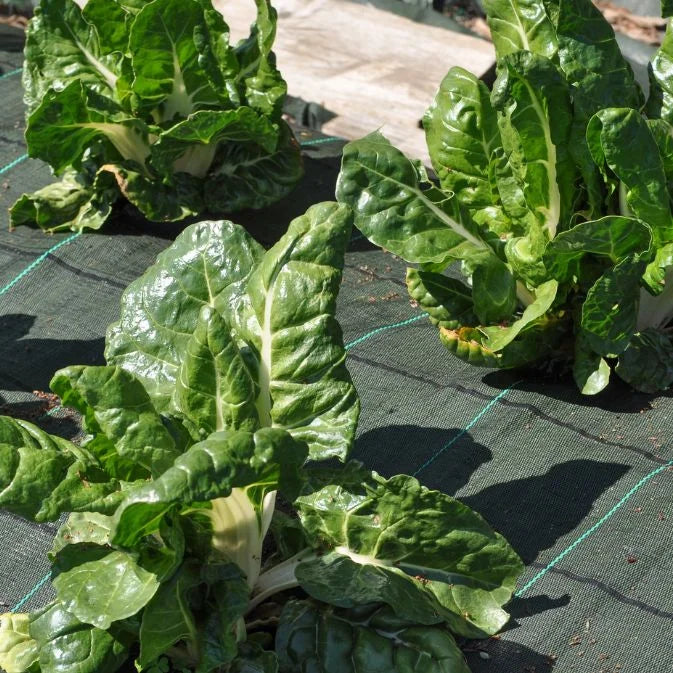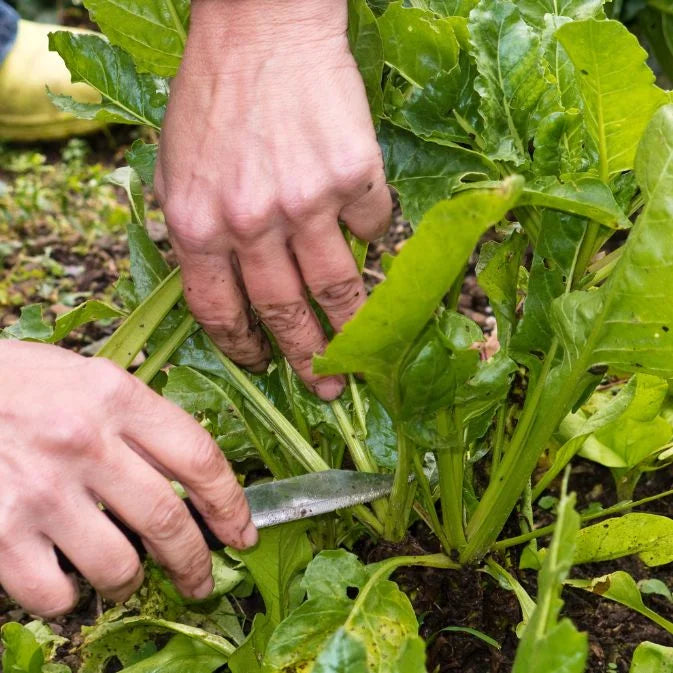Introduction
Silverbeet, also known as Swiss chard, is a nutritious and versatile leafy green that can thrive in a variety of climates. Whether you have a spacious garden or limited space, growing silverbeet is a rewarding experience that yields an abundance of vibrant, tasty leaves. In this comprehensive guide, we will explore the step-by-step process of cultivating silverbeet in Australia, from selecting the right planting time to overcoming common growing problems. We’ll also cover how to grow silverbeet in pots and propagate it from cuttings. By following these instructions, you can enjoy a continuous harvest of delicious silverbeet from your own backyard.
How Long Does Silverbeet Take to Grow
Silverbeet is a fast-growing leafy green that can be ready for harvest within 60 to 70 days after sowing the seeds. However, the actual time it takes for silverbeet to reach maturity can vary depending on several factors, including the variety, growing conditions, and climate.
Some silverbeet varieties are specifically bred for rapid growth and can be ready for harvest even earlier, within 40 to 50 days after sowing. Silverbeet grows best in cooler temperatures and may slow down in growth during the hot summer months. Therefore, planting silverbeet during the cooler seasons, such as autumn and spring, can result in faster and more consistent growth.
Silverbeet Growing Problems
While silverbeet is generally easy to grow, it can encounter a few common issues. Being aware of these problems and their solutions can help you maintain healthy and productive silverbeet plants:
- Bolting: Bolting is the premature flowering of silverbeet, typically caused by extended periods of hot weather. When silverbeet bolts, the leaves become bitter and tough, rendering them less desirable for consumption. To prevent bolting, plant silverbeet during the cooler months and provide shade or use shade cloth during heatwaves.
- Pests: Silverbeet can be susceptible to pests such as aphids, caterpillars, and slugs. Regularly inspect your plants for signs of pest infestations and remove pests by hand or use organic insecticidal soaps or neem oil to control them.
- Diseases: Silverbeet may be prone to diseases like downy mildew, powdery mildew, and root rot. To prevent disease, avoid overwatering and promote good air circulation around the plants. Remove and discard any infected leaves or plants.
- Nutrient Deficiencies: Silverbeet requires adequate nutrients for healthy growth. If the leaves exhibit yellowing or discoloration, it may indicate nutrient deficiencies. Ensure proper fertilisation with a balanced fertiliser or compost to provide essential nutrients.
- Poor Germination: Inconsistent watering, soil compaction, or planting too deeply can result in poor seed germination. To improve germination rates, ensure that the soil remains consistently moist and lightly cover the seeds with soil.
By addressing these issues promptly and providing proper care and maintenance, you can overcome common silverbeet growing problems and cultivate thriving plants in your garden.
How to Grow Silverbeet in Pots
Growing silverbeet in pots is an excellent option for gardeners with limited space or those who want the convenience of a portable garden. Here’s how to grow silverbeet in pots:
- Container Selection: Choose a large pot or container with a minimum capacity of 20 litres (5 gallons). Ensure the container has drainage holes at the bottom to prevent waterlogging.
- Potting Mix: Fill the container with a high-quality potting mix enriched with organic matter. Avoid using garden soil, as it may compact and hinder root growth.
- Seedlings or Transplants: Start with healthy silverbeet seedlings or transplant them from indoor pots. Place one seedling per container, ensuring that the root ball is covered with soil and the top of the seedling is at the same level as the soil surface.
- Sunlight and Watering: Place the container in a location that receives at least 6 to 8 hours of direct sunlight daily. Water the plants regularly, keeping the soil evenly moist but not waterlogged.
- Fertilisation: Feed the plants with a balanced liquid fertiliser every two weeks or follow the package instructions for granular fertilisers. This provides the necessary nutrients for healthy growth and leaf production.
- Pruning: Regularly harvest the outer leaves of the silverbeet to encourage new growth and prevent overcrowding in the pot.
- Pest and Disease Management: Monitor your silverbeet plants regularly for pests and signs of disease. Use organic pest control methods when necessary to protect the leaves.
By following these steps, you can successfully grow silverbeet in pots and enjoy a fresh supply of nutritious and flavorful greens from your patio or balcony.
How to Grow Silverbeet from Cuttings
Propagating silverbeet from cuttings is an easy and cost-effective way to cultivate new plants. Here’s how to grow silverbeet from cuttings:
- Selecting Cuttings: Choose healthy silverbeet plants with mature leaves. Using sharp, clean scissors or pruners, cut a stem with at least two to three sets of leaves from the parent plant.
- Preparing the Cuttings: Trim the lower leaves from the cutting, leaving a few sets of leaves at the top. This reduces water loss and focuses the plant’s energy on root development.
- Rooting Hormone (Optional): To encourage faster rooting, you can dip the bottom end of the cutting in a rooting hormone before planting it.
- Planting the Cuttings: Fill a small pot or container with a well-draining potting mix. Insert the cutting into the soil, ensuring the bottom part is covered and secured in the potting mix.
- Watering: Water the cutting immediately after planting to settle the soil around the stem. Keep the soil consistently moist but not waterlogged during the rooting process.
- Sunlight: Place the pot in a bright location that receives indirect sunlight. Avoid exposing the cutting to direct sunlight, as this may cause excessive drying.
- Root Development: Within a few weeks, the cutting should develop roots and begin to produce new leaves. Once the new growth is established, you can transplant the silverbeet into a larger container or directly into your garden.
By following these steps, you can easily propagate silverbeet from cuttings and expand your garden with new, healthy plants.
Harvesting Silverbeet
Harvesting silverbeet is a simple process that allows you to enjoy a continuous supply of fresh and nutritious greens. Here’s how to harvest silverbeet:
- Leaf Harvest: When the silverbeet plants have reached a suitable size, you can begin harvesting the outer leaves. Gently pull the leaves downward and away from the plant’s centre to avoid damaging the growing point.
- Selective Harvesting: To extend the harvest period, harvest only a few leaves from each plant at a time rather than harvesting the entire plant at once. This allows the inner leaves to continue growing and ensures a steady supply of fresh leaves.
- Outer Leaf Removal: Remove the older, outer leaves first, as they tend to be larger and may show signs of ageing. Leave the younger, inner leaves to continue growing and producing new leaves.
- Pruning Flower Stalks: If your silverbeet plants start to produce flower stalks, known as bolting, it’s essential to remove them promptly. Bolting signals the end of leaf production, and the leaves may become bitter and less desirable for consumption.
- Extended Harvesting: By practising selective harvesting and removing flower stalks, you can extend the silverbeet’s productive period and enjoy fresh greens throughout the growing season.
Does Silverbeet Grow Back?
Yes, silverbeet is a regenerative plant that can grow back after harvesting. When you selectively harvest the outer leaves from the silverbeet plant, the inner leaves and growing point (crown) continue to produce new leaves. As long as the crown remains healthy, it will continuously generate fresh growth, allowing you to harvest silverbeet leaves over an extended period.
Conclusion
Growing silverbeet in your Australian garden is a rewarding and straightforward experience. By selecting the right planting time, providing proper care, and addressing common growing problems, you can enjoy a continuous supply of nutritious and flavourful leaves throughout the growing season. Whether you have a spacious backyard or limited garden space, silverbeet can be grown in pots or directly in the ground, making it a versatile and adaptable addition to any garden. With its rapid growth and regenerative nature, silverbeet is a valuable addition to any home garden, providing a rich source of vitamins and minerals for your culinary creations. Happy gardening and bon appétit!










